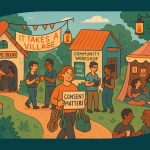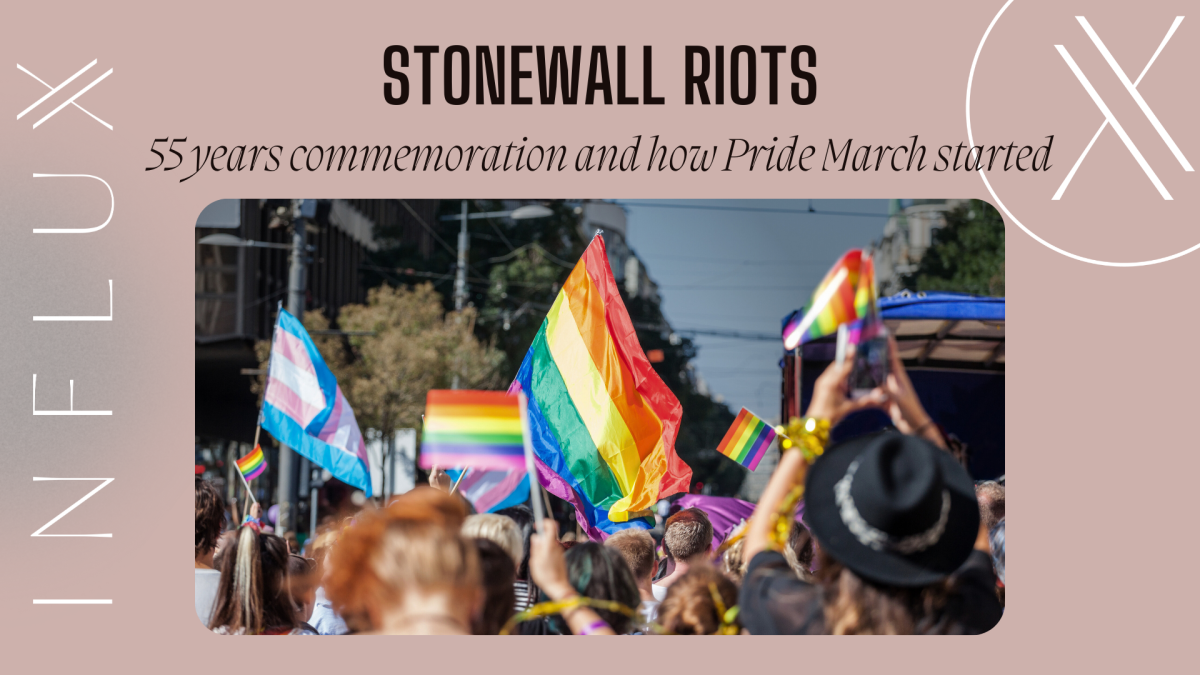
Summer is the perfect time to have a vacation, recharge and plan for an amazing autumn!
21 June, 2024
If You Want a Kinky Village, Be a Good Kinky Villager
12 September, 2025Pride month started as a riot against police brutality at a small, unglamorous bar in New York City called the Stonewall Inn.
The 1960s and preceding decades were not welcoming times for lesbian, gay, bisexual and transgender Americans. For these reasons, LGBT individuals flocked to gay bars and clubs, places of refuge where they could express themselves openly and socialise without worry. Police used a 19th-century masquerade law to arrest people dressed in drag. The rule stipulated that a person was required to wear at least three gender-appropriate articles of clothing to avoid arrest for cross-dressing. It was referenced everywhere, including in reports about arrests in Greenwich Village in the weeks and months leading up to the 1969 Stonewall Riots but the problem was that the law technically never existed. The police took advantage of these laws to raid drinking establishments and arrest transgender and gender non-conforming individuals. Just after midnight on June 28, 1969, the police raided the Stonewall Inn like they had many times before, even just a few days before the riot-inducing raid, but this time something unusual happened, Stonewall patrons fought back.
The Stonewall Inn
The crime syndicate saw profit in catering to disdained gay customers, and by the mid-1960s, the Genovese crime family controlled most Greenwich Village gay bars. They purchased Stonewall Inn, a “straight” bar and restaurant, in 1966 which they cheaply renovated, and reopened it the next year as a gay bar.
Stonewall Inn was registered as a type of private “bottle bar,” which did not require a liquor license because customers were supposed to bring their own liquor. The attendees had to sign their names in a book upon entry to maintain the bar’s false exclusivity. The Genovese family bribed New York’s Police to ignore the activities occurring within the club.
Stonewall Inn quickly became an important Greenwich Village institution. It was relatively cheap to enter and it was one of the few, if not the only, gay bar left that allowed dancing. It welcomed drag queens, who received a bitter reception at other gay bars and clubs and it became a nightly home for many runaways and homeless gay youths. Raids were still a fact of life, but usually corrupt cops would tip off Mafia-run bars before they occurred, allowing owners to stash the alcohol that was sold without a liquor license and hide other illegal activities.
When police raided Stonewall Inn on the morning of June 28 the bar wasn’t tipped off this time. Armed with a warrant, police officers stormed the club and found bootlegged alcohol and proceeded to mistreat customers and arrest 13 people, including employees and people violating the state’s gender-appropriate clothing “law”.
Fed up with constant police harassment and social discrimination, angry clients and neighbourhood residents gathered around, outside of the bar, rather than disperse, becoming increasingly agitated as the events unfolded and people were aggressively manhandled. Close to 4 a.m. the mob of protestors outside the Stonewall had grown so large and uncontrollable that the police, a few prisoners and a Village Voice writer barricaded themselves in the bar, which the mob attempted to set on fire after breaching the barricade repeatedly. Tensions between New York City police and gay residents of Greenwich Village erupted into more protests the next evening and again several nights later. Within weeks, Village residents quickly organised into activist groups to concentrate efforts on establishing places for gays and lesbians to be open about their sexual orientation without fear of being arrested.
The Outcome of the Stonewall Riots – Pride March
The Stonewall riots didn’t start the gay rights movement but it was a motivating force for LGBT political activism. In the weeks and months after, sexual minorities in New York City that faced gender, class, and generational obstacles to becoming a cohesive community, initiated politically active social organisations and launched publications that spoke openly about rights for gay people.
E.R.C.H.O. (Eastern Regional Conference of Homophile Organizations) was formed in 1962 as an organisation of east coast homophile groups and they were the organisers of the Annual Reminder Day Picket – a series of protest that took place on 4th of July, between 1965-1969, meant to remind the American people that a substantial number of American citizens were denied the rights of “life, liberty, and the pursuit of happiness” enumerated in the United States Declaration of Independence. Five months after the riots, at the November 1969 E.R.C.H.O Conference held in Philadelphia, activists suggested that they shift focus from planning the Reminder Day Picket to organising an annual demonstration in commemoration of Stonewall. The 13 voting organisations present adopted the following resolution: “We propose that a demonstration be held annually on the last Saturday in June in New York City to commemorate the 1969 spontaneous demonstrations on Christopher Street and this demonstration be called Christopher Street Liberation Day. We also propose that we contact Homophile organisations throughout the country and suggest that they hold parallel demonstrations on that day. We propose a nationwide show of support.”
On the one-year anniversary of the riots on June 28, 1970, thousands of people marched in the streets of Manhattan from the Stonewall Inn to Central Park. The parade’s official chant was: “Say it loud, gay is proud.” Committee member and activist Craig Schoonmaker was the first to suggest using the term “pride”: “We were going to create a number of events the same weekend as the march to bring in people out of town, and wanted to unite the events under a label. First thought was ‘Gay Power’. I didn’t like that, so proposed gay pride. There’s very little chance for people in the world to have power. People did not have power then; even now, we only have some. But anyone can have pride in themselves, and that would make them happier as people, and produce the movement likely to produce change.” – Craig Schoonmaker from Allusionist podcast 12: Pride – transcript.
The first Christopher Street Liberation Day was a resounding success, the thousands of attendees surpassing organisers expectations. New York, Los Angeles and Chicago quickly began planning for 1971, and soon other cities, states, and countries would begin to establish their own annual Pride traditions. Since June 1970, LGBTQ+ people have continued to gather together in June to march with Pride.
Sources:
- https://www.history.com/news/stonewall-riots-facts-gay-rights-lgbt
- https://www.history.com/topics/gay-rights/the-stonewall-riots
- https://www.loc.gov/ghe/cascade/index.html?appid=90dcc35abb714a24914c68c9654adb67
- https://arapahoelibraries.org/blogs/post/when-did-pride-month-officially-start
- https://shorturl.at/7YDMW
- https://en.wikipedia.org/wiki/Annual_Reminder
- https://en.wikipedia.org/wiki/Pride_Month#
- https://en.wikipedia.org/wiki/Stonewall_riots

